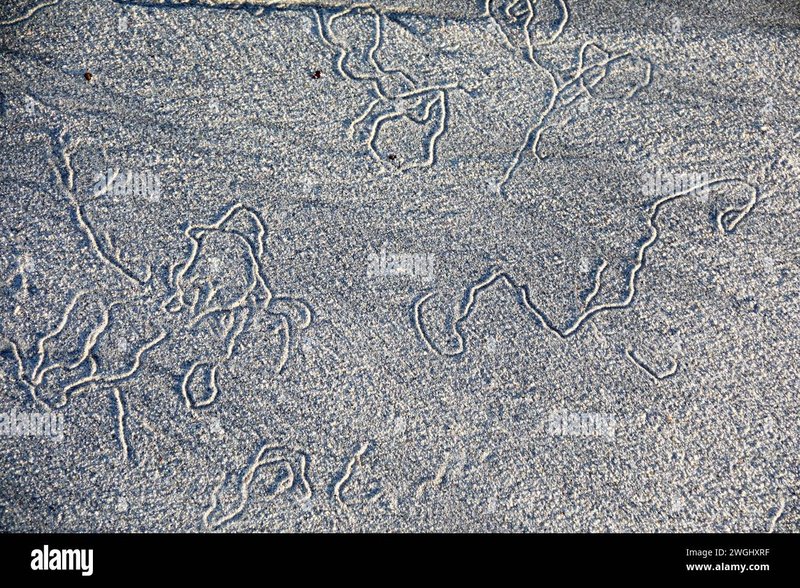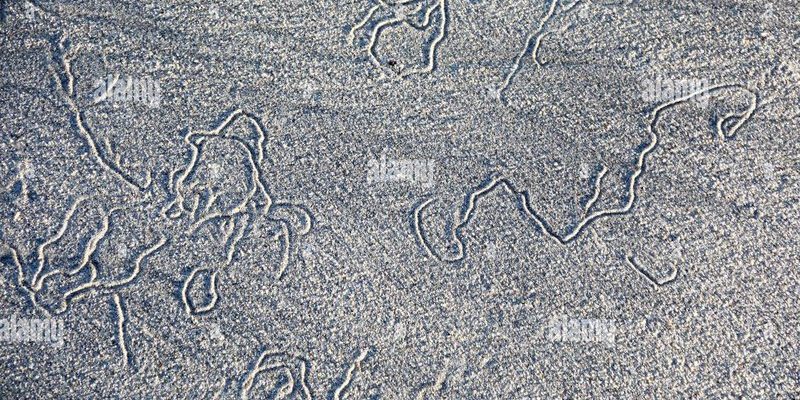
Imagine you’re at a party, and someone has just shared a mind-boggling fact: bootlace worms can grow to be up to 10 feet long! Now, you’re probably wondering how you can tell if those unique trails you see belong to these incredible worms. Let’s dive into the world of bootlace worms and learn how to identify their trails, what makes them interesting, and why you might want to keep an eye out for them the next time you’re near wet sand.
What Are Bootlace Worms?
Bootlace worms, known scientifically as *Lineus longissimus*, are fascinating creatures that can be found in tidal pools and sandy beaches across Europe. They belong to the phylum Nemertea, which means they’re part of a group known as ribbon worms. Their name comes from their incredibly long and slender bodies, resembling bootlaces. These worms can reach lengths of up to 30 meters (about 100 feet) in some cases, although most are typically much shorter.
These worms are generally a vibrant yellow or green color, blending beautifully with the wet, sandy environment they inhabit. They utilize a sticky mucus to help them navigate through the sand and catch small prey. You might be surprised to learn that they can even extend their bodies to capture food, using a proboscis equipped with lethal barbs—yes, they can be quite the predators!
Understanding bootlace worms helps us appreciate these unique inhabitants of our beaches and rivers. They play a crucial role in the ecosystem, helping to break down organic material and providing food for various animals.
How to Identify Bootlace Worm Trails
Identifying bootlace worm trails in wet sand can be an exciting experience. These trails are distinct, making them relatively simple to spot once you know what to look for. The first thing to notice about a bootlace worm trail is its **wavy, snake-like pattern**. It usually appears as a long, sinuous line that can curve and twist erratically, mimicking the movements of the worm itself.
You’ll often find these trails leading toward the water or to areas with moisture. If you’re near a beach, look where the waves meet the sand, as this is where bootlace worms frequently leave their marks. The best time to spot these trails is during low tide, when the sandy surface is exposed and the water has receded.
Another characteristic of these trails to note is their **width**. Bootlace worm trails aren’t very wide — typically, they’ll only be a few millimeters across. If you see something broader or more structured, it could belong to another creature like a crab or a mollusk.
Common Mistaken Identities
While bootlace worm trails are exciting to find, they can sometimes be mistaken for other types of animal trails, which can lead to confusion. For instance, you might come across **crab tracks**, which often appear as a series of small, rounded impressions rather than smooth lines. Crabs tend to scuttle sideways, leaving distinct impressions that don’t have the long, flowing quality of bootlace worm trails.
Another common misleading trail is from snails or slugs. These trails are typically more **slimy** than those of bootlace worms and can often leave a sticky residue. Snail trails may also feature a more zigzag pattern, while bootlace worm trails are usually smoother and more fluid in appearance.
Understanding these differences is crucial for identifying bootlace worms confidently. If you’re curious, consider taking photos of any trails you find. Comparing them can help sharpen your identification skills!
Why Bootlace Worms Matter
You might be wondering: why should I care about bootlace worms and their trails? Well, the truth is these fascinating creatures play an essential role in our ecosystem. They help to **aerate the sand**, making it more habitable for other species. By breaking down organic material, they also contribute to nutrient cycling in coastal and aquatic environments, supporting a vibrant food web.
Additionally, spotting bootlace worms can be an excellent way to teach kids and adults alike about marine biology and the importance of biodiversity. It encourages us to appreciate the small details in nature, sparking interest and curiosity about other creatures that share our planet.
Lastly, by being aware of bootlace worms and their habitats, we can take steps toward **conservation**. Recognizing their significance in their ecosystem helps us make informed decisions about protecting their environments from pollution and overdevelopment, ensuring that future generations can appreciate the wonder of these creatures.
Tips for Observing Bootlace Worm Trails
If you’re eager to spot bootlace worm trails on your next beach outing, here are some tips to help you succeed:
- Choose the Right Time: Visit during low tide when the wet sand is more exposed and trails are easier to see.
- Look for the Right Conditions: After a rain or when the sand is freshly disturbed can be great times to check.
- Use a Camera: Take pictures of any trails you see to compare with other findings later. It’s a fun way to learn!
- Be Patient: Sometimes, you might need to spend a bit of time looking closely to spot these trails.
- Respect Nature: Always observe from a distance to avoid disturbing the worms and their habitats.
By following these tips, you’ll enhance your chances of spotting bootlace worm trails during your outdoor adventures. Plus, you’ll gain a deeper appreciation for the wonders of the natural world all around you.
Identifying bootlace worm trails in wet sand opens up a fascinating world of nature that many people overlook. With their unique shapes and significance in the ecosystem, these trails are more than just patterns—they’re like stories told by the bootlace worms themselves. Now that you know what to look for, the next time you’re wandering along the beach or riverbank, take a moment to observe and appreciate these incredible creatures and their trails.
Whether you’re a seasoned beach-goer or just someone curious about nature, getting to know bootlace worms adds a layer of engagement to your outdoor experiences. So grab your camera, head to the shore, and see what hidden wonders you can discover in the sand!

